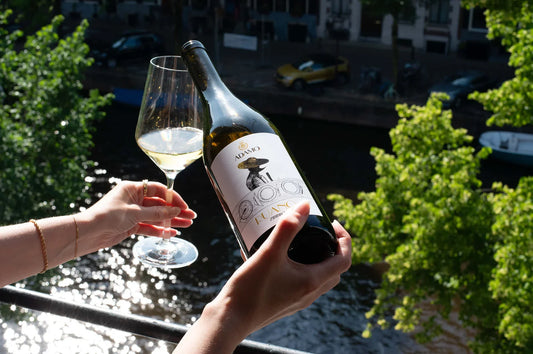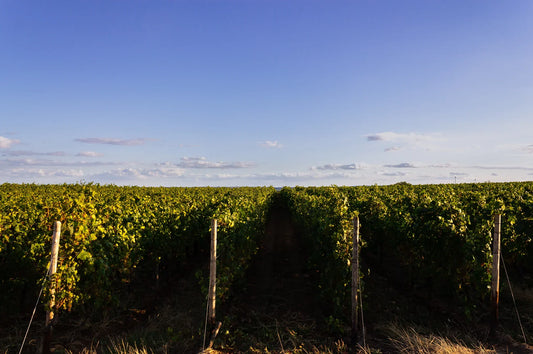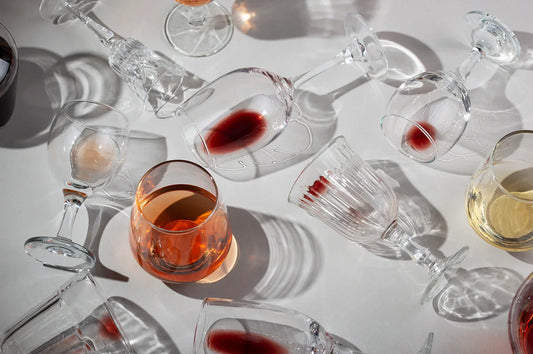If you've ever found yourself staring at a wine list or wines in a wine shop, unsure what most (or any) of the wines are, you're like almost everyone else! It turns out most wines are just not labeled in an intuitive way. And while most labels can tell us a lot about the wine inside, it takes a good bit of wine knowledge to understand them.
To try to help, we've put together this article to walk through the kinds of information to look for on a label, what common terms mean, and how to use the label to get a better sense of what the wine inside is like.
The meaning of common terms on wine labels and what to look for
A wine's label generally provides valuable information about the wine's origin, quality, and characteristics. Let's take a quick dive into some of the most frequently encountered terms and walk through what they mean:
- Appellation: The appellation refers to the specific geographic area where the grapes were grown. It could be a country, region, or even a vineyard. Often an appellation will include 3 or 4 letters followed by a region. For example, you'll see AOC on the best French wines, like AOC Bourgone (French for Burgundy), or DOCG on Italian wines, like Barolo and Amarone.
Most appellations have rules that must be followed in making the wine, which can include everything from the types of grapes used to how the grapes are grown, how the wine is aged, and where the grapes come from. As a result, appellations can tell us what to expect from wine.
Unfortunately, unless you already know the rules behind an appellation, the term alone won't tell you much. One general rule of thumb is the more specific an appellation, the higher the perceived quality of the wine. So a wine that bears an appellation from a specific vineyard would often be seen as ‘better’ than a wine bearing an appellation from a region or country, but this is far from hard and fast.
- Grape Varietal: Many, though far from all, wines will include the grape varieties used to make the wine (think Chardonnay, Merlot, or Cabernet Sauvignon). A wine made entirely or predominantly from one grape is called a ‘varietal’ and a wine made from multiple grapes is a ‘blend.’ Neither is inherently better than the other!
-
Vintage: Vintage is the year on the bottle, which indicates the year the grapes were harvested. While not all bottles display the vintage, it can be a significant factor in determining the wine's character. Certain years may produce exceptional or challenging growing conditions, which can influence the wine's quality. This represents another challenge in picking wine as the same wine from two different years can taste very different! But generally speaking if you find regions and styles that you like, you don't need to worry too much about different vintages. Vintage is also useful in gauging how old a wine is, with older wines, particularly reds, generally being a bit softer and smoother and younger wines being brighter and fruitier, especially red wines.
-
Alcohol Percentage: This indicates the alcohol content of the wine, expressed as a percentage by volume. The alcohol level can impact the wine's body, balance, and overall taste experience.
-
Wine Style/Description: Many labels include descriptions or keywords that give you an idea of the wine's style, flavour profile, or ageing. This might include terms like "full-bodied", "dry", "fruity", "oaked", or "aged in stainless steel". These descriptors can help you choose a wine that suits your preferences.
-
Organic/Biodynamic/Sustainable/Natural: These terms highlight environmentally friendly and sustainable farming practices used in grape cultivation. Organic wines are made from grapes grown without synthetic pesticides or fertilizers, while biodynamic wines go beyond organic methods, incorporating holistic farming principles. Sustainable wines emphasize eco-friendly agriculture practices, and natural wines prioritize a reduced use of sulphites, pesticides, and other practices that are seen by some as interfering with the natural flavours of the wine.
-
Reserve/Reserva: The terms “Reserve” or “Reserva” can indicate a higher quality wine that has been aged longer than the winery's standard offerings. However, it's important to note that the specific requirements to use these terms vary between different wine regions and producers and in some places are unregulated, meaning these terms can often be more marketing than anything else. A notable exception is wines from Rioja where Reserva (and Gran Reserva) do genuinely indicate quality.
-
Awards and Medals: Wine labels may feature accolades such as medals or awards received from prestigious competitions or critics. These achievements signify recognition for excellence in winemaking and can be an indicator of quality, but generally the more awards listed on the bottle, the more likely they are to be marketing fluff. The best wines don't need to shout that they're the best!
- Taste Descriptors: Wine labels often include tasting notes that give hints about the wine's flavour profile. These descriptions can range from fruity and floral to spicy or oaky, providing a glimpse into the expected sensory experience. While these aren't helpful in terms of quality, they can provide useful insight into the overall taste of the wine.
And remember, if you want to look up what any term means, check out our wine glossary or message our Wine Hotline!
Unpacking Wine Varietals
Perhaps most important to a wine's taste is the type of grapes used to make it. When you spot a variety on the wine label, it's tipping you off to the wine's character, suggesting notes and flavours that await inside. Familiarising yourself with popular varietals such as Chardonnay, Merlot, or Shiraz will help you better anticipate how a wine will taste and pick wines that match your personal preferences.
Each grape brings a 'flavour profile'—which can range from light and zesty to dark and brooding. While how the wine is made, where it's grown, the quality of grapes, winemaking practices, and age will significantly impact a wine's flavour, individual varieties tend to impart their own specific traits to the wine. To help, below are some common varieties and notes structure you're likely to encounter with each of them.
- Merlot - Known for its soft, ripe, and elegant fruitiness.
- Chardonnay - Offers a range of styles, from buttery oak-aged to crisp and mineral.
- Sauvignon Blanc - Typically brings a zesty acidity with green herbal notes.
- Cabernet Sauvignon - Famed for its structured tannins and deep, complex flavour.
- Pinot Noir - Celebrated for its delicate aromas and silky texture.
- Syrah/Shiraz - Can vary from spicy and herbaceous to rich and full-bodied.
Keep in mind, though, that many wines do not list the grapes. Often, these are wines from distinct appellations with rules on the grapes that can be used. But even then, many of those rules permit winemakers to choose from a number of grapes and give wide latitude for how the grapes are blended, meaning even if you know the appellation you still might not know what's in the bottle. That's one of the reasons why at Raravina we include the grapes in the information about each wine!
In conclusion, understanding how to read a wine label works like a secret key to understand so much more about what you're buying and drinking. By familiarizing yourself with the common terms and information you'll find on a label, you can confidently navigate the wine list next time it's handed to you, and select the perfect bottle for any occasion.
Stay nosey!




